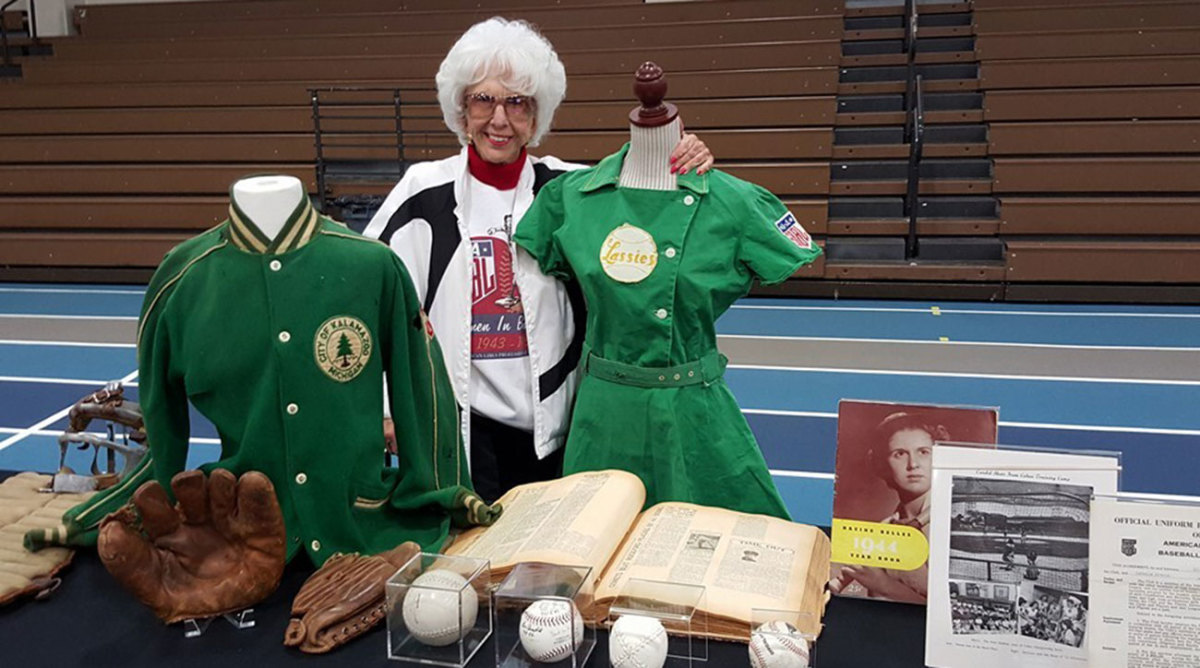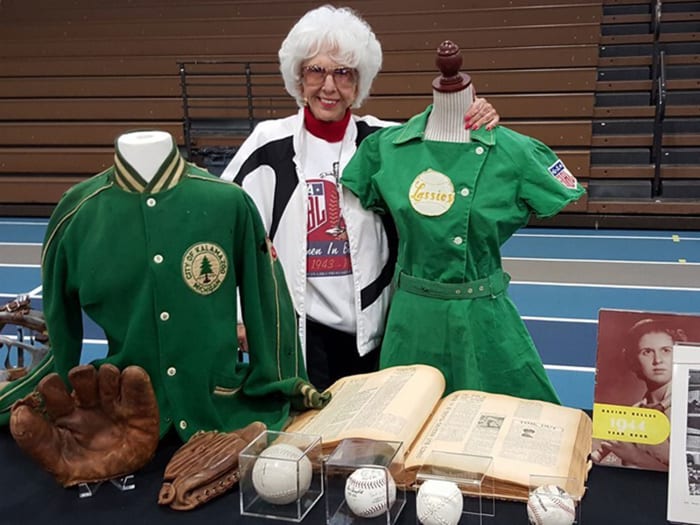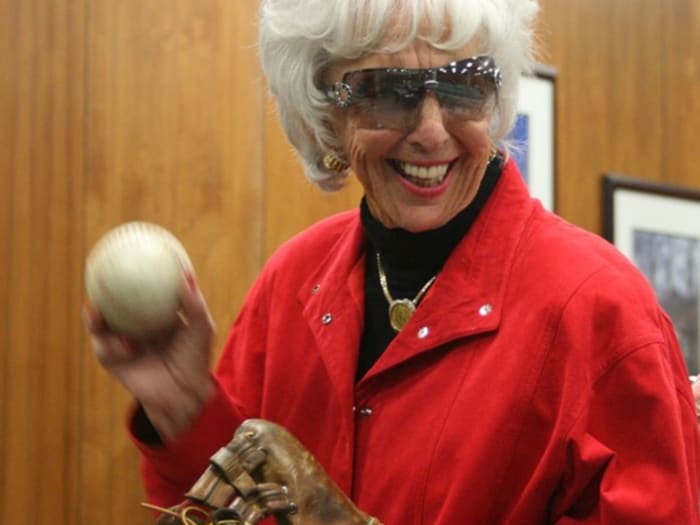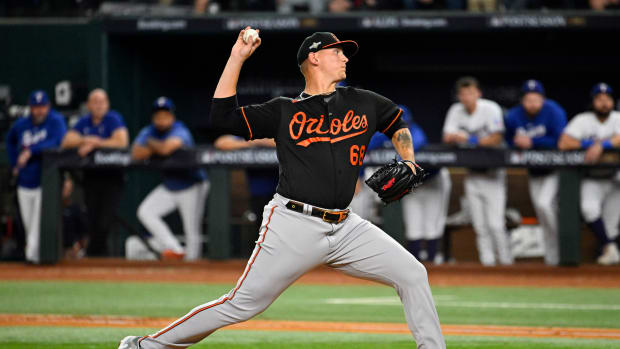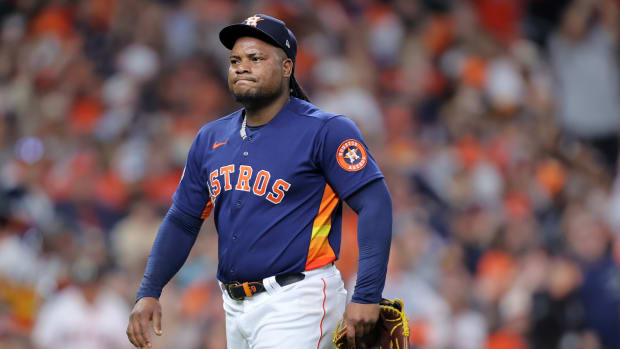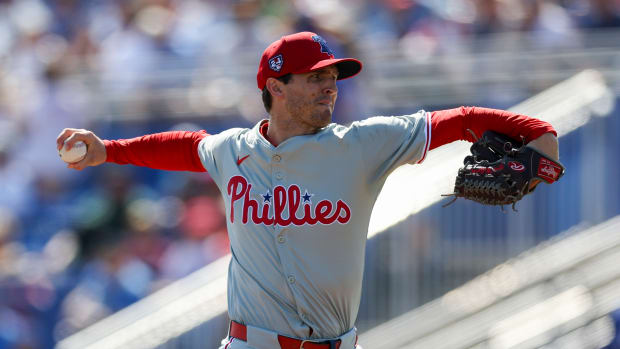From 'A League of Their Own' to Building a Museum of Their Own
Maybelle Blair is clear-eyed about the fact that she does not have too many birthdays left. (“I’m just thrilled to be on this side of the dirt,” she quips.) But she sees that simply as a reason to get to work.
The 93-year-old got to play only one season in the All-American Girls Professional Baseball League—the women’s league that started during World War II and was immortalized in the film A League of Their Own—but it shaped the rest of her life. So she has just one request for her 94th birthday on January 16: support for a project she has been dedicated to for years, a fund to build a center that will not only honor the women who played baseball in the ‘40s and ‘50s but also encourage and create new opportunities for girls to play the sport now.
Blair is one of the directors of the International Women’s Baseball Center, a group that started from a few members of the old AAGPBL Players’ Association, in hopes of eventually creating a museum and educational center for girls and women in baseball. They’ve acquired land for the center in Rockford, Ill.— across the street from the ballpark that was home to the Rockford Peaches from A League of Their Own. Blair, with the group from the beginning, has been a driver of much of their early work.
“She is a force,” says Kat Williams, president of the board of directors for the center and a history professor who studies women’s sports at Marshall University. “She’s tireless. She knows this is her legacy. … She has a passion for giving girls the same opportunity that she had.”
The project is ambitious—they’ve started with a plaza that features tributes to women in baseball and eventually want a full museum that will offer educational workshops for young girls, alongside batting cages and other playing resources. The goal is for Rockford to be as linked to women’s baseball as Cooperstown is to MLB or Williamsport is to Little League. In the context of these grand plans, which will require millions of dollars in funding, Blair’s current fundraiser request is a relative drop in the bucket: $9,400 dollars by her 94th birthday. But she’s in it for the long haul.
Blair loved baseball from childhood. She never imagined, however, that she’d have a chance to play professionally. When the AAGPBL was established in the ‘40s, as MLB players began to go overseas in World War II, it was a revelation: “Just like when you walk into a dark room, but the light switch turns on—oh, hey, my God, there is light.” She pitched for the Peoria Redwings, and she later went on to play professional softball for a few years, but she found that it wasn’t the same for her. “What about baseball that’s different, I guess, is it gets in your blood and you can’t help it,” she says.
She credits her playing career for a surge in confidence and self-sufficiency that framed the rest of her life. After Blair returned home, she went on to have a long career with Northrup Aircraft, where she was one of the first female division managers in the company. She never lost touch with baseball, however, and in retirement, she has been especially dedicated, speaking to girls around the country to let them know that they, too, can play baseball if they favor it over softball. (She even threw out a first pitch at a girls’ tournament at age 92.)
“We had the most wonderful time of our lives playing baseball. Our girls today haven’t had that opportunity, so we’d like to preserve it and give them the opportunity that we had,” Blair says of the AAGPBL. “It makes my dreams come true when I see little girls out there. … People are realizing that girls can play baseball. It just means the whole world to me, and I want every girl to have a chance.”
The IWBC has sponsored several girls’ baseball tournaments, along with the premier international tournament for women, the Women’s Baseball World Cup. Their hope for the museum is that it will encourage more of these opportunities simply by virtue of its existence—by showing people that there is a long history of girls and women in the game, at various levels, and in various capacities.
“It would be a home for girls and women from the beginning of baseball,” says Williams, who grew up playing as a shortstop in the lonely days before Title IX. “It’s a place where those of us who have lived and breathed that history, we can go there and touch some of it, we can see that we are a part of something bigger.”
While the AAGPBL is the most high-profile example of women’s baseball history, it is far from the only one. “People think that women started playing baseball in 1943 with the All-Americans and stopped in 1954 when that league ended, but nothing could be further from the truth,” Williams notes. The first record of a women’s team playing baseball, not softball, is from 1866, and there were women’s barnstorming teams, as well as a handful of women in the Negro leagues. (One of the sculptures that the IWBC is building at its plaza in Rockford is a tribute to Black women in baseball that includes those three women: Toni Stone, Connie Morgan, and Mamie Johnson.) There’s a strong tradition of women playing baseball internationally, too—Japan dominates the Women’s Baseball World Cup. And there are women who have worked as scorekeepers, in front offices, as groundskeepers, as coaches, and more.
The hope is that the museum will showcase all of this. For Blair and the other AAGPBL players who are still alive—fewer than 30 remain from a group of more than 600—the idea of capturing this context is key.
“Even though they understand their history is important, they know that it’s bigger than them,” Williams says. “And so they were determined—this is not going to be an All-American Girls Professional Baseball League museum, this is not going to be a Rockford Peaches museum, it’s going to be about women’s baseball, and one way we create opportunities is by showing girls that they have a history and that they stand on the shoulders of a lot of really awesome women.”
For Blair, it’s a chance to cement a legacy. Before COVID-19, she was known for getting on a plane to go anywhere, anytime, to talk about women in baseball. Now, she jokes, “I might get on my mule and take off.” She wants girls today to know about what they did, and more importantly, to know that they can do it, too. She wants them to have a place to visit and understand that there is space for them.
“And these are the things that just have to be done before I die,” she says with a laugh. “So until that first shovel goes into the dirt, I’m going to work my fingernails off.”






























